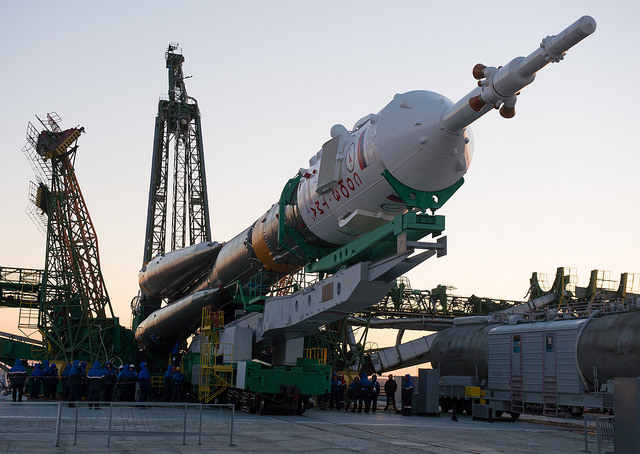In just a couple of days a Soyuz rocket will lift off from the Baikonur Cosmodrome, carrying NASA astronaut Tom Marshburn, Canadian Space Agency astronaut Chris Hadfield, and Russian Federal Space Agency cosmonaut Roman Romanenko within the TMA-07M capsule on a two-day trip to the ISS. While many improvements have been made to the Soyuz rockets and spacecraft since the first launch in 1966, the bottom line is that the Soyuz have become the world’s most used launch vehicles due to their consistent performance and relatively low cost.
Here, CSA astronaut Chris Hadfield talks about the Soyuz, briefly describing the strengths of the Russian technology that will once again take him and fellow Expedition 34/35 crew members to the ISS, where in March of next year he will become the first Canadian to take command of the Station.
“This is a safe and reliable and proven way to leave the Earth, and each successive Soyuz is different; each one has small changes. The role of the astronaut is to learn those small changes… and learn to apply them.”
– Canadian astronaut Chris Hadfield
The T version of the Soyuz craft began flying manned missions in 1980 and in 1986 the TM versions were transporting crews to Mir. The TMA upgrade addressed previous astronaut/cosmonaut height restrictions and permits the Soyuz to be used as a lifeboat for ISS crews, if necessary.
Find out more about the long history of the Soyuz spacecraft here, and read more about today’s Soyuz rollout here.
Video: CSA. Inset image: NASA/Carla Cioffi


Key word? Pragmatic! The Russians have shown over the years a talent for using tried and true technology… The Soyuz rocket is a prime example. Hopefully their pragmatism will overlap with and consort with the continuing development of spaceflight!